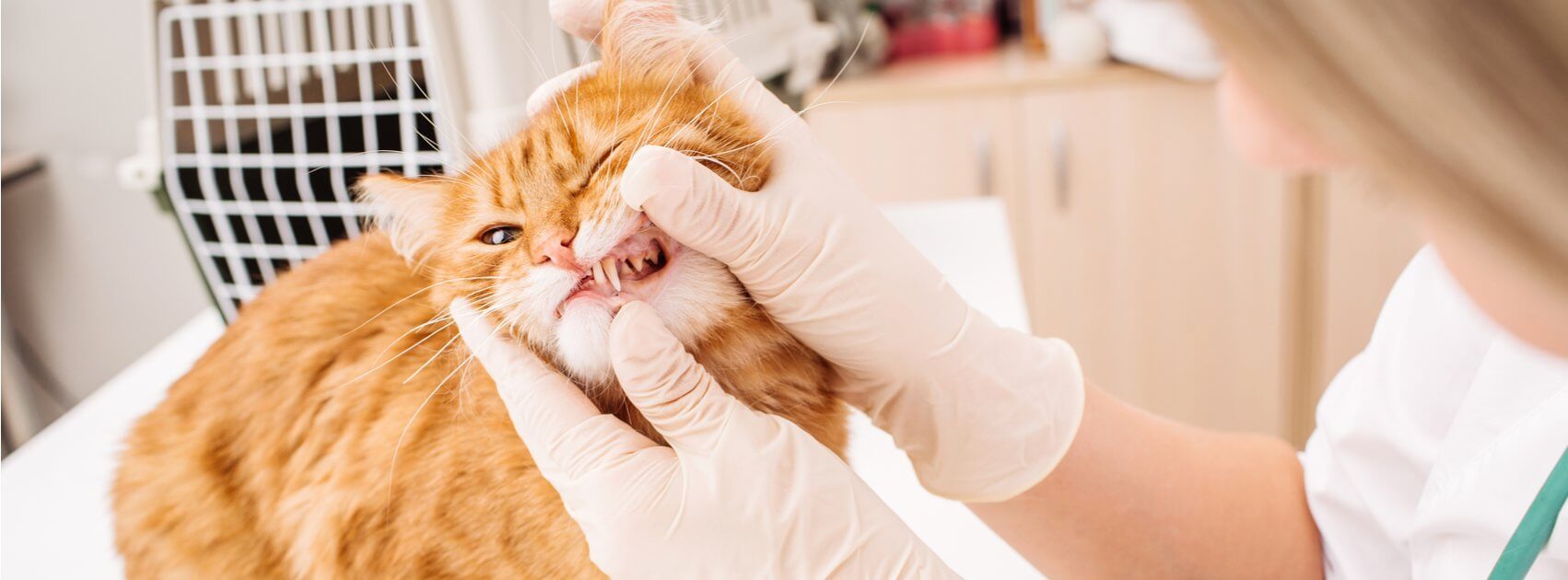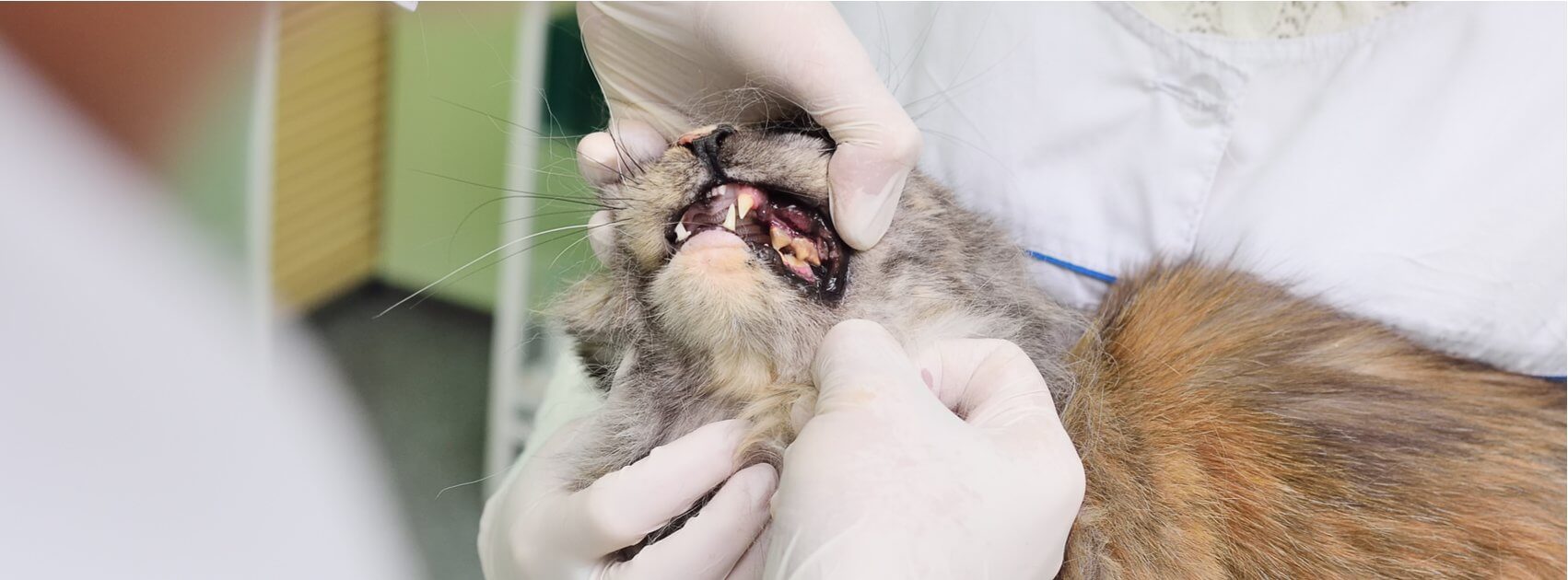Tooth loss and decay usually occur as a direct result of advanced periodontal disease. Feline periodontal disease develops when plaque and tartar extend below the gumline.
The bacteria that are present in this “subgingival” plaque then begin to secrete toxins that result in inflammation, damaging the supporting tissues around the teeth.
According to Dr. James Anthony, DVM, BSc (Agr.), MRCVS, FAVD, DAVDC, DEVDC, PAg, oral health issues are the #1 problem facing pets.
By the time they reach three years of age, about 80% of cats have oral health issues, with many showing the tell-tale signs of early onset periodontal disease.
But, other than foul breath odor—something that many owners just write off as “bad breath”—there are few other symptoms of the disease during its early stages.
Consequently, periodontal disease often goes untreated, leading to multiple problems for your cat, including pain and, eventually, tooth loss.
Some studies have also shown that older animals with advanced periodontal disease often display evidence of liver, kidney, and heart damage.
What are the causes of feline periodontal disease?
A cat’s mouth is full of bacteria. Almost immediately after a cat eats, saliva and bacteria begin to form a sticky film over the exposed surfaces of its teeth.
Over time, minerals in the cat’s saliva react with the plaque, causing it to harden into tartar (dental calculus), which remains firmly attached to the teeth.
Although tartar is unsightly, it’s not the actual cause of periodontal disease. Together with gum inflammation though, it’s a diagnostic indication of it.
The bacteria contained in plaque are deemed foreign invaders by the cat’s immune system, triggering white blood cells (leucocytes) and inflammatory chemical signals.
The leucocytes and other chemical messengers travel to the space between the bone or gum and the tooth. The white blood cells’ function is to destroy the invading bacteria.
However, chemicals produced by the white cells actually inflict damage on the gums and the tooth’s supporting tissues.
Rather than helping to tackle the problem, the cat’s own natural defenses only serve to make the whole situation worse. Secondarily, due to the inflammatory situation, resorptive lesion can develop on the teeth compounding the periodontal disease and increasing pain.
There are four stages of feline periodontal disease:
Grade 1 - Gingivitis
The first sign of impending periodontal disease is when the cat develops “gingivitis.” Gingivitis is a medical term, meaning inflammation of the gums.
The condition occurs when bacteria enter the gingival sulcus, the small pocket between the tooth and the gum. The cat’s gums will appear swollen and red around the tooth margins, and they may bleed when the teeth are brushed.
A film of plaque will coat the teeth. Gingivitis is almost always accompanied by “bad breath.”
Grade 2 - Early periodontitis
In the early stages of periodontal disease, the inflammation of the gums becomes more pronounced. Subgingival plaque and tartar have formed and bone loss has begun, although the tooth root is not exposed at this stage.
Grade 3 - Established periodontitis
As the disease becomes more established, the cat’s gums look inflamed and reddened. The gums bleed easily when the cat is eating or playing with toys, or when the cat’s teeth are brushed.
Beneath the gumline, up to 30 percent of the tooth’s supporting structures have been permanently damaged by infection and tartar. At this stage, teeth in affected areas of the mouth may become loose.
Grade 4 - Advanced periodontitis
In advanced periodontitis, chronic inflammation has set in, destroying the teeth, gums, and supporting bone. The gums usually recede, exposing the roots of the affected teeth and causing the cat severe pain.
In serious cases, a fistula (hole) may form from the oral cavity into the cat’s nasal passages, causing continual, chronic nasal discharge.
Severe infection of the jawbone (osteomyelitis) can weaken the whole structure, leading to fractures. Inflammatory by-products carried by the bloodstream readily spread through the cat’s body, potentially causing damage to the vital organ systems.
Signs of feline periodontal disease
Cats are instinctually hesitant to show signs of weakness. This is one of the reasons that feline periodontal disease often goes undetected until it has become established.
Dr. Anthony states there are a number of signs and symptoms of early feline periodontal disease that cat owners should look out for:
- foul breath
- red, swollen gums
- loose teeth
- plaque and tartar on the cat’s teeth
As feline periodontal disease progresses, these symptoms may appear:
- reluctance to eat; difficulty eating and chewing
- bleeding gums
In advanced cases of periodontal disease, the cat will display the following signs:
- teeth “chattering” (in response to discomfort or pain)
- depression
- receding gums
- loose or lost teeth
- weight loss
- other associated conditions, such as kidney or liver problems
- weakness, lethargy
Feline periodontal disease can be prevented
- Feline periodontal disease can be prevented if it is recognized and treated early.
- Bacteria in the cat’s mouth are responsible for forming plaque on the teeth, which forms tartar when combined with saliva.
- When tartar extends beneath the gumline, periodontal disease begins.
- If left untreated, periodontal disease can result in pain and tooth loss.
- Advanced Grade 4 periodontal disease can result in serious health complications, including kidney and liver disease.
- If your cat shows any of the classic signs of feline periodontal disease outlined above, seek veterinary advice right away!










